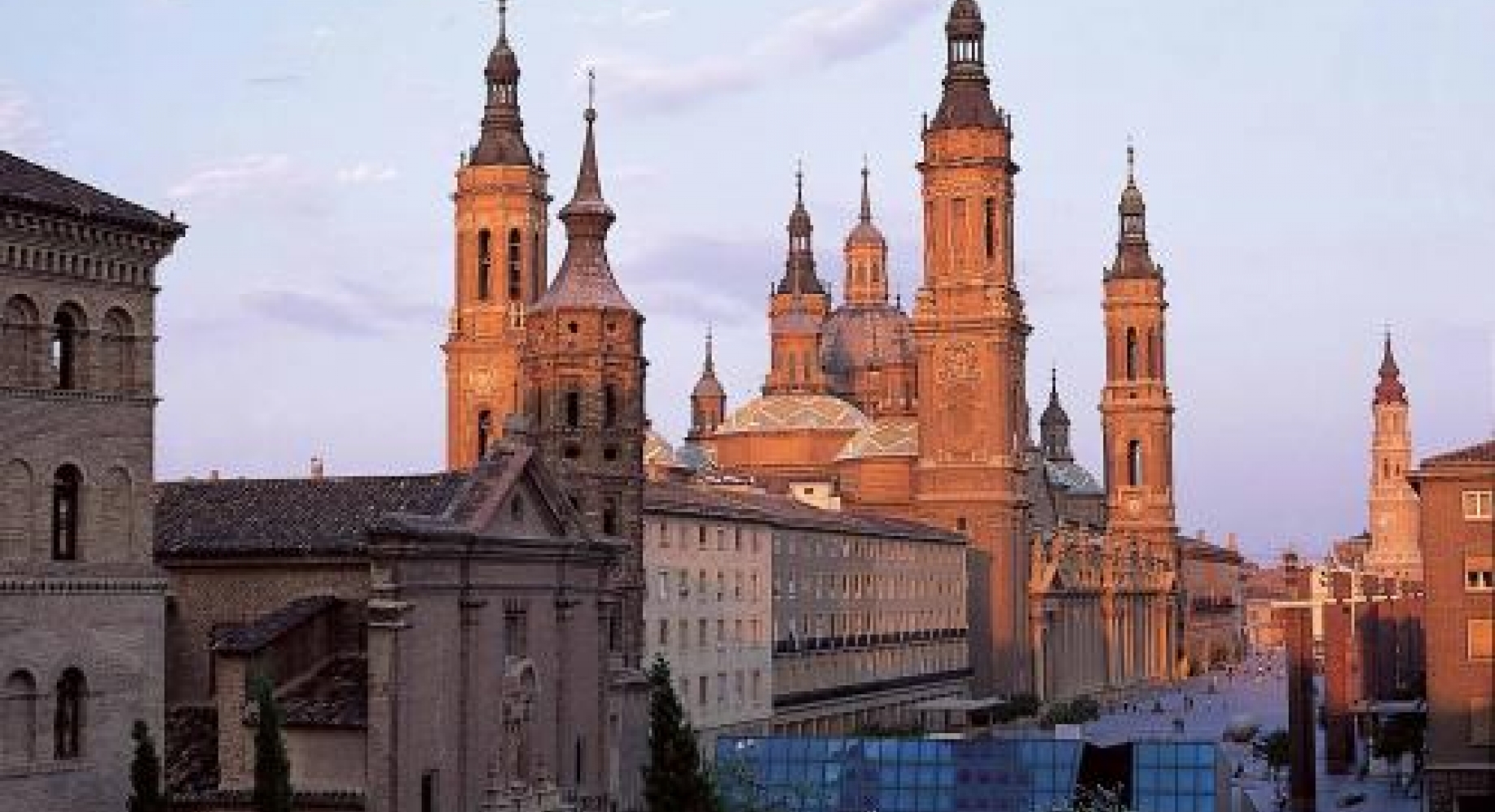You are here
Home › Zaragoza weekend breakZaragoza weekend break

ZARAGOZA, a city of four cultures, offers everything a visitor would expect from a big city, but with the feel and friendliness of a village.
Although steeped in history Zaragoza is every bit a modern, forward-looking city with ambitious plans for the future, at the heart of which is its bid for Expo 2008.
The plans include redevelopment of land north of the Ebro, the wide river along which the city is built, as well as a new railway station, bridges across the river and a dam to maintain the water level to promote sport and leisure activities on the water.
The city is competing against Trieste, in Italy and Thesalonika, in Greece in the Expo 2008 bid and will find out on 15 December of it has been successful.
Ever since the first Iberian settlements in the Neolithic times Zaragoza has been a strategic location and remains so today. Zaragoza is Spain´s fifth city and is located roughly 300km from each of four of the other five main cities, Madrid, Barcelona, Valencia and Bilbao. Links with these neighbouring cities will only increase with the arrival of the high speed AVE train which can cover the 300 km in just an hour and 45 minutes.
As a result of its location, distribution is big business in Zaragoza, and a new industrial zone (Pla-Za) has just been started to locate industries interested in being well located, likethe European distribution centre for the Spanish clothing firm Zara.
With a population of 700,000, Zaragoza is the capital of Aragón and after decades of migration away from the countryside it is home to more than half the population of the region.
It is this which gives the city its small-town feel because a large number of its inhabitants grew up in villages.
The mechanisation of agriculture in Aragón combined with the growth of industrialisation in Zaragoza caused people to move to the city in search of work
Today the main industry is car manufacturing, with the Opel factory employing 9,000 workers directly as well as many other associated industries which have been set up as a result of it. The factory makes mainly Corsas, including those for the British market, but also the Opel Meriva.
Other industries include paper and paper products such as serviettes.
Automation is another industry in the city and despite not having a metro, Zaragoza makes carriages for the AVE as well as metal for the transport industry. Zaragoza is also a centre for service industries, administration, banking and finance and a centre for meetings, sport, international ferias or trade fairs, as well as music concerts, attracting big names, like the Rolling Stones, who played there last year.
As champions of the Copa del Rey, the equivalent of the FA Cup, plans are under way for a new stadium for the city´s football team, Real Zaragoza, which enjoys strong support from locals, on the current site of La Romareda, in Calle Luis Bermejo.
Discussions are under way as to whether the city should have a metro or tram system or a combination of the two.
Zaragoza continues to grow today through immigration from south America and north Africa and there is development in every direction, with a combination of houses and apartments being built, but all within a four-storey height limit so as not to impede the wonderful views of the Basilica del Pilar, which can be seen from every direction. A new ring-road or cinturon is also being built to encompass the whole city.
The arrival of cheap flights to the city´s airport will also bring more people to Zaragoza. After several months of discussions between different low cost airlines and the company set up by the Ayuntamiento of Zaragoza and the Aragón government, Ryanair have won the contract and will begin running daily flights from London Stansted on 1 December.
Even if you come to Zaragoza for a shopping trip or just to party the nights away, it is impossible to avoid the history of the former Roman settlement whose present name derives from its Roman title of Cesaraugusta. By the time the Moors were making their way across Spain, in the eighth century, Zaragoza was still a thriving city, although less so than in Roman times. They ruled the city from 714 to 1118 and left their mark on it, which can is still very strong today in the form of the Mudejar architecture and the Aljaferia Palace, now the seat of the Aragonese government.
- Log in to post comments

